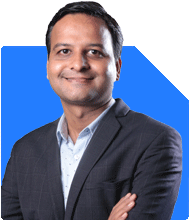I am 33 years old. I have mutual funds of ?20 lakhs and direct stocks of ?10 lakhs. I have a PF balance of 9 lakhs with monthly contributions of 20k towards it. I have NPS balance of 6 lakhs but no monthly contributions towards it. I have a FD of 11 lakhs. US stocks worth 1 lakh. I have a Home loan of 34 lakhs. How much should I invest every month to have a corpus of 10 crore at the age of 55?
Ans: Thank you for sharing your financial details and your goal of building a Rs 10 crore corpus by the age of 55. Achieving this ambitious target will require a well-structured investment plan and disciplined financial management. Let's break down the steps and strategies to help you reach your goal.
Current Financial Situation
Existing Investments
Mutual Funds: Rs 20 lakhs
Direct Stocks: Rs 10 lakhs
Provident Fund (PF): Rs 9 lakhs with monthly contributions of Rs 20,000
National Pension System (NPS): Rs 6 lakhs (no monthly contributions)
Fixed Deposit (FD): Rs 11 lakhs
US Stocks: Rs 1 lakh
Home Loan: Rs 34 lakhs
Total Assets and Liabilities
Total Assets: Rs 57 lakhs
Total Liabilities: Rs 34 lakhs (Home Loan)
Setting the Stage for Investment
To reach Rs 10 crore in 22 years, you need to adopt a mix of aggressive and balanced investment strategies. The following sub-headings will guide you through the process.
Assessing Your Current Portfolio
Diversification and Risk
Diversified Portfolio: Your portfolio includes mutual funds, direct stocks, PF, NPS, FD, and US stocks. This diversification is good as it spreads risk across different asset classes.
Risk Profile: At 33, you can afford to take higher risks for potentially higher returns, especially with your long investment horizon.
Investment Strategy
Monthly Investment Requirement
To determine how much you should invest monthly to achieve Rs 10 crore by age 55, we will assume an average annual return rate. Historically, equity markets have provided around 12-15% annual returns. Let’s proceed with a balanced approach assuming a 12% average annual return.
Monthly Investment Estimate: To reach Rs 10 crore in 22 years with a 12% annual return, you need to invest a significant amount monthly. Based on a financial projection, you will need to invest approximately Rs 40,000 to Rs 50,000 per month.
Enhancing Existing Investments
Increase Equity Exposure: Given your age, consider increasing your equity exposure for higher returns. Allocate more to mutual funds and direct stocks.
Regular NPS Contributions: Start contributing regularly to NPS to benefit from tax deductions and long-term growth.
Optimizing PF Contributions: Continue with PF contributions for a stable, low-risk investment.
Detailed Investment Plan
Mutual Funds
Systematic Investment Plan (SIP): Increase your SIP in equity mutual funds. Aim for a mix of large-cap, mid-cap, and small-cap funds.
Balanced Funds: Consider balanced or hybrid funds for a mix of equity and debt exposure, providing stability and growth.
Review and Rebalance: Regularly review and rebalance your portfolio to maintain the desired asset allocation.
Direct Stocks
Blue-chip Stocks: Invest in blue-chip stocks for stability and consistent returns.
Growth Stocks: Allocate a portion to high-growth stocks with the potential for higher returns, but with higher risk.
Regular Monitoring: Actively monitor your stock portfolio and stay updated with market trends.
Provident Fund (PF)
Consistent Contributions: Continue with the monthly contributions of Rs 20,000.
Interest Accumulation: PF offers compounded returns with minimal risk, contributing to long-term wealth.
National Pension System (NPS)
Regular Contributions: Start monthly contributions to NPS. Even Rs 5,000 per month can significantly impact your corpus.
Tax Benefits: Utilize the additional tax benefits under Section 80CCD(1B) for NPS contributions.
Fixed Deposit (FD)
Review FD Returns: FDs offer low returns compared to equity investments. Consider reallocating a portion of FDs to mutual funds or stocks.
Emergency Fund: Maintain a portion in FDs for emergency liquidity needs.
Managing Home Loan
Prepayment Strategy
Early Prepayment: Consider prepaying your home loan whenever possible to save on interest costs. This will free up more funds for investment.
Tax Benefits: Balance the benefits of tax deductions on home loan interest with the interest savings from prepayment.
Tax Efficiency
Tax-Saving Investments
Section 80C: Maximize contributions to PF, NPS, and ELSS to avail tax benefits under Section 80C.
Section 80D: Utilize health insurance premiums for additional tax deductions.
Capital Gains Management
Long-Term Capital Gains (LTCG): Plan your investments to minimize tax on long-term capital gains. Equity investments held for over a year are subject to favorable tax treatment.
Tax Harvesting: Use tax harvesting strategies to minimize tax liability on gains.
Monitoring and Review
Regular Portfolio Review
Annual Review: Conduct an annual review of your portfolio to ensure alignment with your financial goals.
Market Trends: Stay informed about market trends and economic changes that may impact your investments.
Professional Guidance
Certified Financial Planner (CFP): Consider consulting a CFP for personalized advice and portfolio management.
Investment Tools: Use financial planning tools and calculators to track your progress and adjust your strategy as needed.
Risk Management
Adequate Insurance Coverage
Life Insurance: Ensure you have sufficient life insurance coverage to protect your family’s financial future.
Health Insurance: Maintain comprehensive health insurance to cover medical expenses and avoid dipping into your investments.
Emergency Fund
Liquidity: Maintain an emergency fund to cover at least 6-12 months of expenses.
Accessibility: Keep this fund in liquid and low-risk instruments like savings accounts or liquid mutual funds.
Behavioral Finance
Avoid Emotional Decisions
Discipline: Stick to your investment plan and avoid making emotional decisions based on market fluctuations.
Patience: Investing is a long-term game. Patience and discipline are key to achieving your financial goals.
Final Insights
Achieving a corpus of Rs 10 crore by the age of 55 is ambitious but attainable with a disciplined and strategic approach. Increase your monthly investments to around Rs 40,000 to Rs 50,000, focusing on equity mutual funds, direct stocks, and regular NPS contributions. Regularly review and rebalance your portfolio, consider prepaying your home loan to save on interest, and ensure adequate insurance coverage and an emergency fund. Consulting with a Certified Financial Planner can provide personalized guidance and help you stay on track. By maintaining discipline, patience, and informed decision-making, you can achieve your financial goals and secure your future.
Best Regards,
K. Ramalingam, MBA, CFP,
Chief Financial Planner,
www.holisticinvestment.in




























